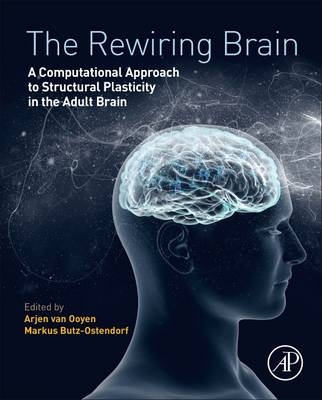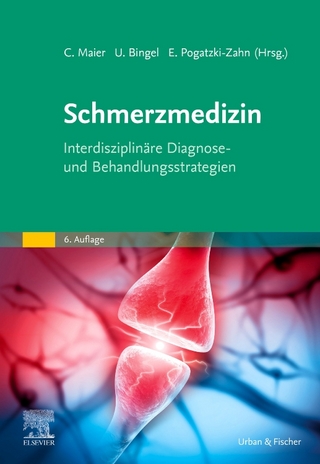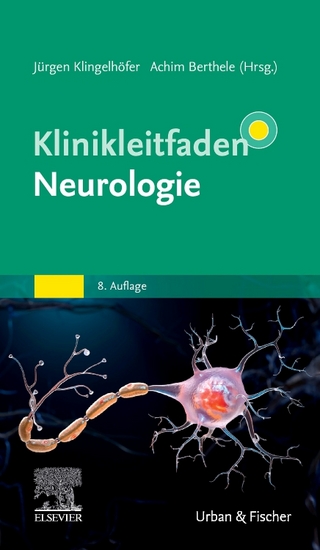
The Rewiring Brain
Academic Press Inc (Verlag)
978-0-12-803784-3 (ISBN)
Exploring the role of structural plasticity in the brain can be greatly assisted by mathematical and computational models, as they enable us to bridge the gap between system-level dynamics and lower level cellular and molecular processes. However, most traditional neural network models have fixed neuronal morphologies and a static connectivity pattern, with plasticity merely arising from changes in the strength of existing synapses (synaptic plasticity). In The Rewiring Brain, the editors bring together for the first time contemporary modeling studies that investigate the implications of structural plasticity for brain function and pathology. Starting with an experimental background on structural plasticity in the adult brain, the book covers computational studies on homeostatic structural plasticity, the impact of structural plasticity on cognition and cortical connectivity, the interaction between synaptic and structural plasticity, neurogenesis-related structural plasticity, and structural plasticity in neurological disorders.
Structural plasticity adds a whole new dimension to brain plasticity, and The Rewiring Brain shows how computational approaches may help to gain a better understanding of the full adaptive potential of the adult brain. The book is written for both computational and experimental neuroscientists.
Van Ooyen was trained as a (theoretical) biologist and received his PhD in computational neuroscience from the University of Amsterdam, the Netherlands, in 1995. After postdoctoral periods at the University of Edinburgh, UK, and the Netherlands Institute for Brain Research in Amsterdam, he started working at VU University Amsterdam in 2004, first as assistant professor and later as associate professor. His long-term interests include the computational and mathematical modeling of neuronal morphogenesis and the development of synaptic connectivity, with a focus on the role of homeostatic structural plasticity in the formation and reorganization of neuronal networks. He is editor of the book Modeling Neural Development (MIT Press, 2003) and author of the review paper Using theoretical models to analyse neural development (Nature Reviews Neuroscience, 2011). Markus Butz-Ostendorf, Ph.D. Markus Butz-Ostendorf studied informatics and biology and holds a PhD in neuroanatomy. He did several postdocs at e.g. at the Bernstein Center for Computational Neuroscience Göttingen, the Neuroscience Campus VU Universiteit Amsterdam and the Forschungszentrum Jülich. His research focus is on modeling structural plasticity in the healthy and diseased brain. Together with Arjen van Ooyen, he phrased a computational theory on the driving forces for homeostatic structural plasticity following brain lesions. The underlying algorithms are freely available in the modeling framework for large-scale spiking neuronal networks NEST. He recently edited Frontiers Research Topic "Anatomy and plasticity in large-scale neuronal networks."
Section 1. Experimental Background
1. Structural plasticity and cortical connectivity
2. Structural plasticity induced by adult neurogenesis
3. Structural neural plasticity during stroke recovery
4. Is lesion-induced synaptic rewiring driven by activity homeostasis?
Section 2. Homeostatic Structural Plasticity
5. Network formation through activity-dependent neurite outgrowth: a review of a simple model of homeostatic structural plasticity
6. Clustered arrangement of inhibitory neurons can lead to oscillatory dynamics in a model of activity-dependent structural plasticity
7. A detailed model of homeostatic structural plasticity based on dendritic spine and axonal bouton dynamics
8. Critical periods emerge from homeostatic structural plasticity in a full-scale model of the developing cortical column
9. Lesion-induced dendritic remodeling as a new mechanism of homeostatic structural plasticity in the adult brain
Section 3. Structural Plasticity and Connectivity
10. The role of structural plasticity in producing nonrandom neural connectivity
11. Structural plasticity and the generation of bidirectional connectivity
12. Spike-timing dependent structural plasticity of multi-contact synaptic connections
13. Selection of synaptic connections by wiring plasticity for robust learning by synaptic weight plasticity
Section 4. Structural Plasticity and Learning and Memory
14. Within a spine’s reach
15. Impact of structural plasticity on memory capacity
16. Long-term information storage by the interaction of synaptic and structural plasticity
17. Impact of structural plasticity on memory formation and decline
Section 5. Neurogenesis-Related Structural Plasticity
18. Adult neurogenesis and synaptic rewiring in the hippocampal dentate gyrus
19. Modifications in network structure and excitability may drive differential activity dependent integration of granule cells into Dentate Gyrus circuits during normal and pathological adult neurogenesis
20. Computational perspectives on adult neurogenesis
21. Restricted Boltzmann Machine models of hippocampal coding and neurogenesis
Section 6. Structural Plasticity and Pathology
22. Modeling the impact of lesions in the brain
23. Network models of epilepsy-related pathological structural and functional alterations in the dentate gyrus
24. Computational models of stroke recovery
25. Neural plasticity in human brain connectivity: the effects of deep brain stimulation
| Erscheinungsdatum | 05.07.2017 |
|---|---|
| Verlagsort | San Diego |
| Sprache | englisch |
| Maße | 191 x 235 mm |
| Gewicht | 1500 g |
| Themenwelt | Medizin / Pharmazie ► Medizinische Fachgebiete ► Neurologie |
| Naturwissenschaften ► Biologie ► Humanbiologie | |
| Naturwissenschaften ► Biologie ► Zoologie | |
| ISBN-10 | 0-12-803784-9 / 0128037849 |
| ISBN-13 | 978-0-12-803784-3 / 9780128037843 |
| Zustand | Neuware |
| Informationen gemäß Produktsicherheitsverordnung (GPSR) | |
| Haben Sie eine Frage zum Produkt? |
aus dem Bereich


